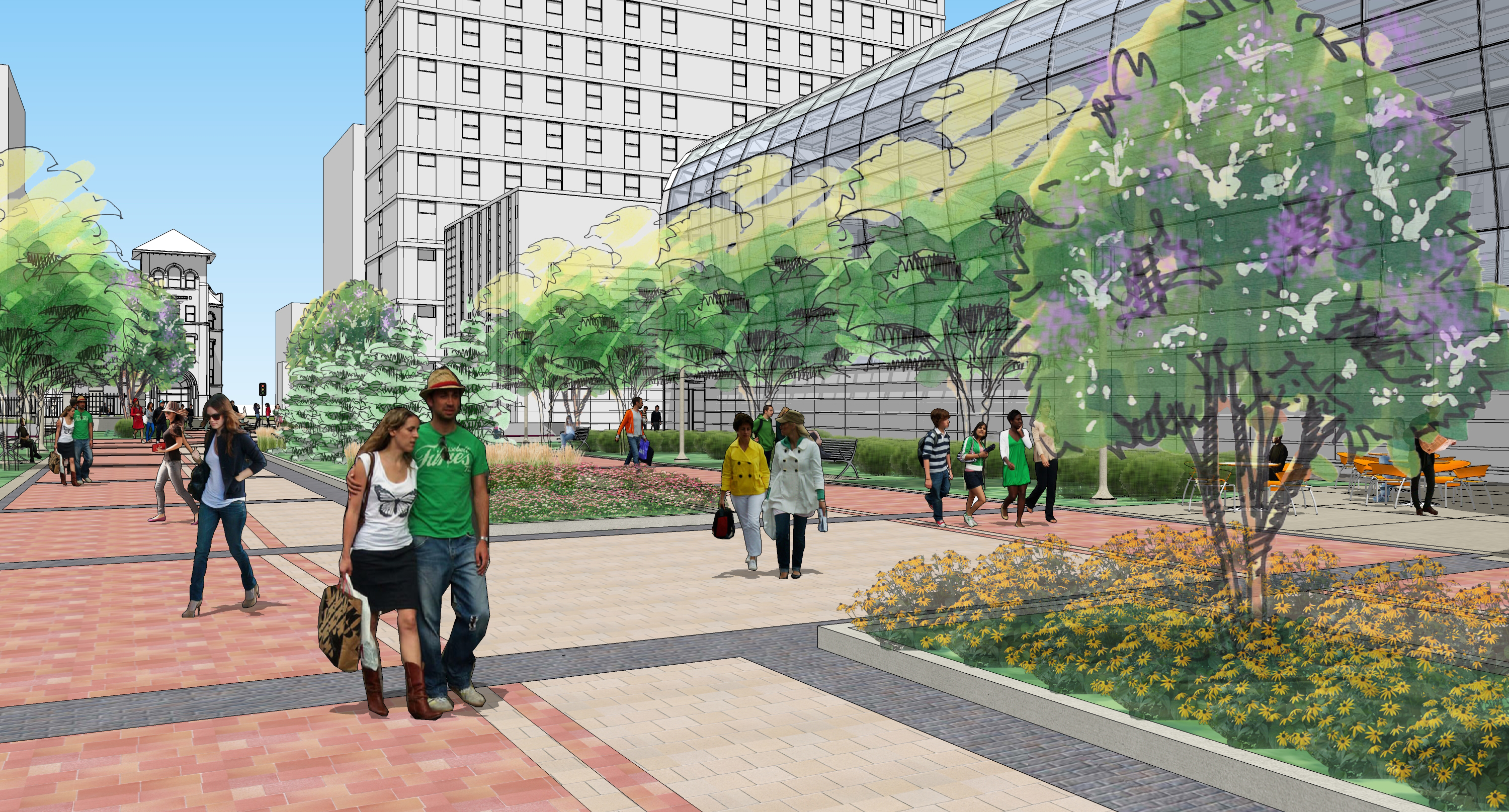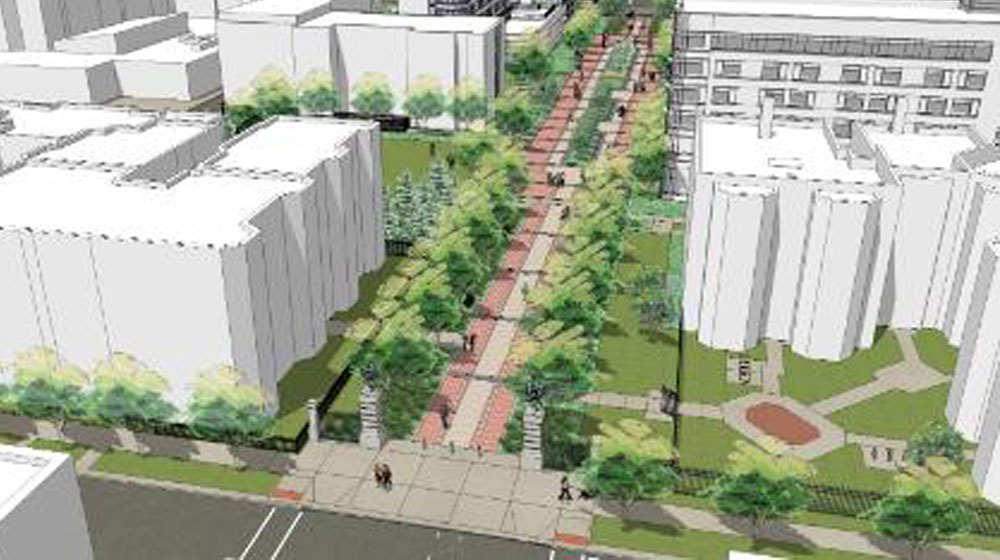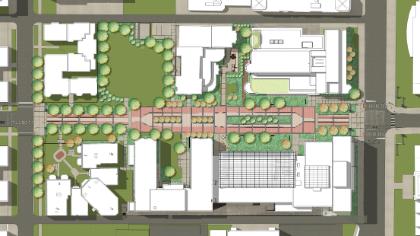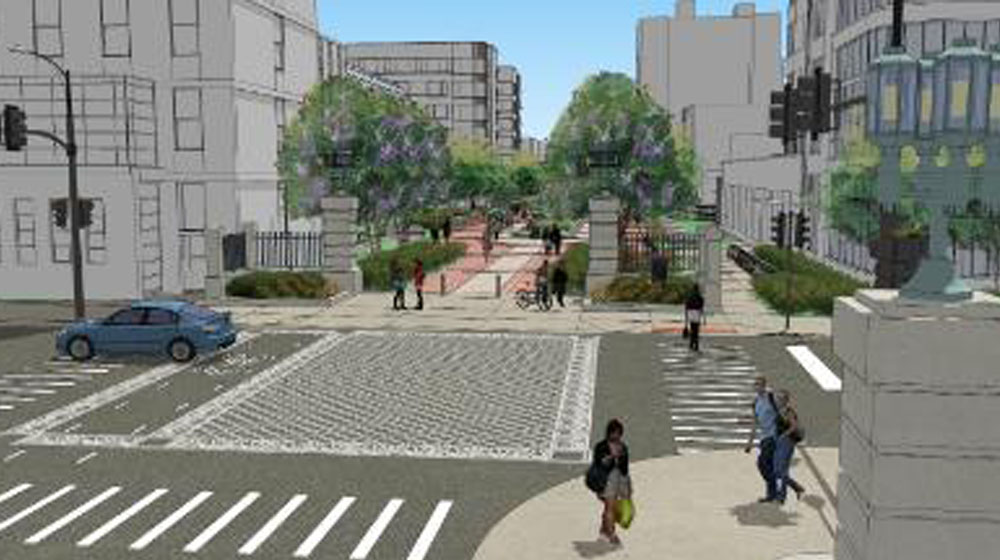Kenmore Vacation

Walkable. Bikeable. Sustainable.
Kenmore Closure Overview: Environmental Sustainability Corridor
Loyola's new Institute of Environmental Sustainability (IES) is near completion. The IES will be an innovative, interactive and adaptable sustainable living and learning environment; and provide both a prototype and a demonstration of the opportunities for innovation and integration that an urban academic/residential setting provides.
As part of the extension of the campus south of W. Sheridan Road, IES will act as a link between the residential area and create a unique identity for the south campus. Through the creation of a "people street" or "environmental sustainability corridor" along 6300 Kenmore, the exterior will mirror the interior. The development of the outdoor corridor allows Loyola to share sustainable learning and green amenities with its students and neighbors.

(Kenmore Avenue looking north from Rosemont)

(Plan Aerial View)
The corridor will feature:
- Bike Lane
- Maps
- Play fields
- Bench seating
- Outdoor cafe
- Rain Garden
- Butterfly sanctuary
- Shade trees
- Native landscape
- Educational signage
- North-south gateways
- Emergency access routes

(View from Sheridan Rd looking south)
Traffic Impact
The 6300 Kenmore block has been closed during the construction of IES and de Nobili Hall since 2011. Since then, there have been some notable changes in the traffic patterns, creating safer conditions for pedestrians. There is a reduction in traffic on the 6200 block of Kenmore with Sheridan Road absorbing roughly 1–2 additional cars per minute during peak hours. The alley to the west and east have also absorbed an additional 6–11 vehicles in the morning and 1-3 fewer vehicles in the evening. Rosemont has seen a slight uptick in eastbound traffic from Broadway.
Parking Impact
Parking in the area has been positively impacted since the closure of Kenmore. According to Loyola's two traffic studies conducted in 2011 and 2013, there has been an 6% overall increase in the availability of on-street parking for non-student neighbors. The reasons for this are:
- Loyola-owned parking has increased by 65%. This increase enables Loyola to provide parking to all students, faculty, staff, tenants and visitors.
- The acquisition, demolition and/or conversion of more than a dozen buildings within the study area since 2011, along with University policies that deter first and second year students from keeping a car on campus reduces the overall demand for on-street parking.
Community Process
The University began the process to vacate Kenmore in November of 2011. The table below is an overview of this process.
| Date | Step of Process |
|---|---|
| November 2011 | Projected traffic and parking impact study |
| January 2012 | Kenmore closes for construction |
| February–April 2013 | Preliminary community group presentations: Association for Sheridan Condo Owners (ASCO)—Supporter Edgewater Environmental Sustainability Project (EESP)—Supporter North Edgewater Beach Association (NEBA)—Supporter Edgewater Neighbors North—non-opposed Edgewater Glen Association—non-opposed |
| March 2013 | Vacation applications to Chicago Department of Transportation (CDOT) |
| April–June 2013 | Board of Underground Review—City of Chicago |
| April–June 2013 | Appraisal |
| April–June 2013 | Design phase |
| June–July 2013 | Five community meetings to show design, seek input |
| July 2013 | Alderman Harry Osterman community meeting |
| July 2013 | Ordinance introduced to City Council pending aldermanic approval |
| August 2013 | Payment and property title transfer |
| August–September 2013 | Kenmore temporarily re-opens during Sheridan Road resurfacing project |
| November 2013–July 2014 | Construction and landscaping |
| August 2014 | Project complete |
Media About Kenmore Vacation:
- Loyola Phoenix, February 2012
- Loyola Student Dispatch, April 2012
- Edgeville Buzz, April 2012
- CBS Chicago, April 2012
- Chi.Streets.Blog, March 2013
- DNA Info, April 2013
- Edgeville Buzz, April 2013
- Architects Newspaper Blog, May 2013
- DNA Info, July 2013


